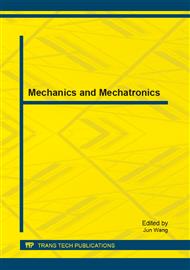p.521
p.528
p.533
p.543
p.550
p.555
p.563
p.570
p.576
Model of Martian Crustal Magnetic Field Based on Equivalent Currents
Abstract:
The UV spectrograph Spectroscopy for the Investigation of Characteristics of the atmosphere of Mars (SPICAM) on board Mars Express made the first observation of auroral-type emission in the cusp region of strong crustal magnetic field on Mars and found that the arc of Martian aurora is very narrow in width, which obviously differs from that of other planets. Based on the observation, we put forward a model of crustal magnetic field on Martian aurora zone through the morphology of Martian aurora. In the model, equivalent currents are proposed, the topology and magnitude of magnetic field generated by these equivalent currents is consistent with that of crustal magnetic field on Martian aurora zone. The morphology of Martian aurora generated through the model matches well with the observations by the Mars Express orbiter.
Info:
Periodical:
Pages:
550-554
Citation:
Online since:
October 2013
Authors:
Keywords:
Price:
Сopyright:
© 2013 Trans Tech Publications Ltd. All Rights Reserved
Share:
Citation:


